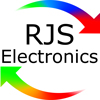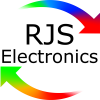Industrial controls or industrial control systems are used to refer to a key location or pinpoint a central point of control of a wider environment. For example, a workshop with lots of machinery may a central point of location which turns all the devices on and off, controls factors such as temperature, speed or quantity but also records data and can identify a fault within a machine or area. This area of controls is likely to use a range of electromechanical components for each function or areas. Some of the switches that are commonly used or identified as Industrial control panels are metal and plastic push button switches, illuminated tact switches, navigation modules and switches, Pots, Knobs and encoder, buzzer switches and even limit switches.
- Buzzers – Our buzzer switches are available in plastic or metal, round or rectangular and with or without LED illumination.
- Proximity Switches – Proximity Switches, type of sensor that provides non-contact detection of metal objects. See here more of our range.
- Indicators & Pilot Lights – a wide range of selection of plastic & metal indicators
- Limit Switches – a series of switches which help to maintain repeatedly used electrical devices. The limit switches are available as a push plunger, Rod lever, and Roller type.
- Push Button Switches – a wide range of metal and plastic switches available with and without led illumination.
- Emergency Stop Switch – fail-safe control switches that provide both safeties for the machinery and the operator(s).
- Selector Switches – Rotary selector switches, 2/3 positions, with/without LED illumination.
- Keylock Switches – round, square and rectangular, plastic and metal switches with two keys.
What are limit switches?
Limit Switches are switches designed to regulate and monitor current within the circuit in order for the function to occur. Often these electronics appliances operate for long periods of time and repetitive. The use of the limit switch ensures that the device can function efficiently without any complications. An example is the presence of limit switches used in lifts on large commercial vehicles. The limit switch efficiently allows the lift to operate notifying the individual of any issues such as a weight-bearing or failing to secure lock or press the right buttons. Considering the number of potential deliveries and times this may be needed, the use of the right limit switch encourages the longevity and efficiency of the overall device.
Types of Limit Switches?
There a range of limit switches available, in a range of sizes with types of actuators and forces to operate a range of devices and operations within industrial controls.
Key Features and benefits of Limit Switches:
- Accurate and Reliable
- Energy efficient
- Control multiple loads and switch loads with high inductance
- Ideal for a range of applications used within industrial environments
RJS Electronics Limit and Safety Limit switch Series
- WL Series: High precision Limit switches with a metal die-cast body. Available with a range actuator: Rod, Roller and Plunger type.
- RJSP Series: IP67 rated series of safety limit switches available with a range of actuator heads: Roller arm type with a variety of lengths and plunger. Conform to EN 50047 and available for a range of actuators in various sizes, a choice of snap action and slow break/make with 2 contact configurations.
- RJSFM: IP67 rated series of safety limit switches which are energy efficient, operating on a low voltage. Available with a range of actuator: roller and plunger head, ideal for cam lift door with hinges.
- RJSDR: IP67 rated safety Limit switch series, available with a range of actuators heads: Roller arm type in a variety of sizes and push plunger-type. An added feature of the RJSDR is that the actuator heads can be lockable.
- RJSD IP67 rated series of safety limit switches available with a range of actuator heads: Roller arm type with a variety of lengths and plunger. Conform to EN 50047 and available for a range of actuators in various sizes, a choice of snap action and slow break/make with 2 contact configurations. RJSD series is suitable for a range of application such as guard doors, moving machine beds, crane arms and lifts.
- D Series Our grey and black horizontal Limit switches, available with a range of plunger type actuators on the top or side. Ideal for short controlled machines or machines with limited space which demand higher mechanical strength.
- AH Series: Our blue metal diecast Limit switches, available with a range of actuators: Whisker, Rod, Roller and plunger.
Each limit switch series has a range of actuators suited for a range of appliances suited to a wide range of industrial environments and applications. The main type of actuator for Limit switches are:
The Roller Arm Type limit switch is usually used for devices or controls which require rotational/ rotary function. The roller arm type limit switch is available in a range of arm lengths to support the function and weight-bearing.
A Rod type, Cat Whisker Type or Wobble stick style is usually used where items are required to be counted and used in conveying application to count objects or something is required to be poked or probed and often used to remove any stuck items.
A Push Plunger type is ideal for an application that has little space but requires small controlled movements.
IP Rating: Let us give you a break down of the IP ratings. Click to save or screenshot the table, for future reference. Many of our PCB and panel mount Slide switches are IP rated. For more information about IP ratings, click to read our blog about IP rating. https://www.rjselectronics.com/blog/2019/blog-rjs/ip-ratings-explained/
|
IP65 Rated |
Dust tight, protected against water projected from a nozzle.
|
|
IP66 Rated |
Dust tight and protected against powerful water jets.
|
|
IP67 Rated |
Dust tight, protected against water immersion for 30 minutes between depths of 150mm to 1000mm
|
|
IP68 Rated |
Dust tight and protected against continuous water immersion.
|
Our Slide switches are IP rated (from the front) which means that our Slide switches are sealed and/or waterproof, making them hardwearing and durable in a range of conditions.
Configuration: By configuration, we are referring to ‘Poles and Throws’. A switch will have two terminals for the current to flow through, to come in and come out. The Poles and Throws determine how many separate circuits the switch can control and the Poles indicate how many switch poles It can be connected to.
Pole and Throw Configurations

We have a range of Limit switches which support a range of poles and throws. Limit switches are commonly referred to as single pole and double pole which relates to the number of circuits that are controlled by the switch. The throw defines how many positions the switches poles can be connected to.
- SPSP – single pole single throw
- SPDT – single pole double throw
- DPST – double pole single throw
- DPDT – double pole double throw
- 3PDT – Three poles double throw
- 4DPDT – Four poles double throw
SPST Limit switches make or break the connection of a single conductor in a single branch circuit. This switch type typically has two terminals and is referred to as a single-pole switch.
SPDT Limit switches make or break the connection of a single conductor with either of two other single conductors. These switches usually have three terminals and are commonly used in pairs. SPDT switches are sometimes called three-way switches.
DPST Limit switches make or break the connection of two circuit conductors in a single branch circuit. They usually have four terminals.
DPDT Limit switches make or break the connection of two conductors to two separate circuits. They usually have six terminals are available in both momentary and maintained contact versions.
View our full product range here | Download our recent product catalogue
Find our range of Limit & Proximity Switches | Not sure how to place an order?
Did you know our products can be customised?
Call us on +44 (0)1234 213600 or email us at [email protected], or use our contact page to leave us a message.
Keep informed by joining our mailing list and be sure to follow us on:
Facebook | Twitter |Linked In | Instagram | Pinterest | Youtube
For custom illumination options, contact us today and speak with our Speak to our Sales Engineers for more information on contacting rating and voltage (v), Our Sales Engineers are fully qualified and have a wealth of knowledge and experience to advise you on your design.


